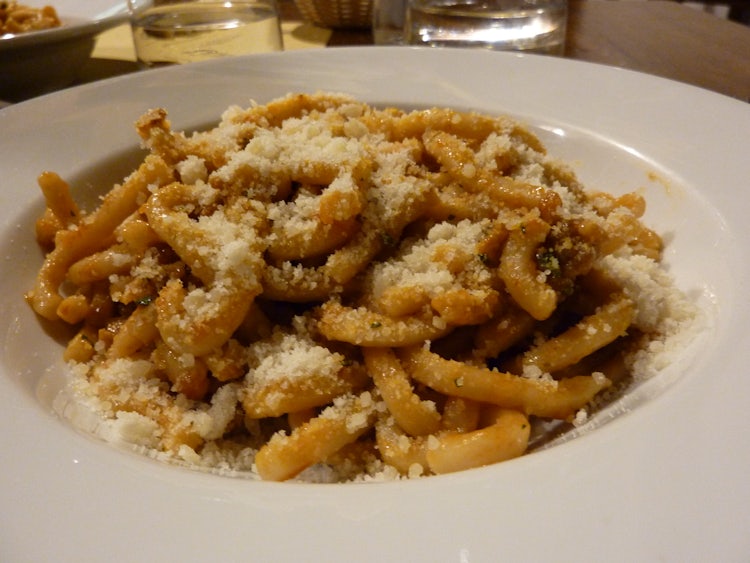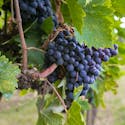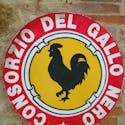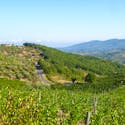Following the Flavors of Maremma's Wine Road
The youngest of the three designated wine roads in the Maremma area, the Strada del Vino di Montecucco radiates, from a center position. Situated in the province of Grosseto, better known for its beaches and Etruscan reminders, these seven communes comprise the areas designated for the production of Montecucco wines: Cinigiano, Arcidosso, Castell’Azzara, Castel del Piano, Civitella Paganico, Campagnatico, Roccalbegna, Santa Fiora, Seggiano and Semproniano. An interesting blend of the Maremma hills, Etruscan ruins and the heights of Mount Amiata blend together in one landscape.

A Quick Historical Overview
The first traces of human activity goes all the way back to ”Grotta dell’Arciere”, a cave with a drawing of men with bows and arrows dating from 5000 to 3000 BC, followed by the Etruscans and the rise to power of the Romans. Longobards arrived in the 6th century AC and set up the Benedictine Abbey of San Salvatore, which virtually held absolute control over the Via Francigena.
The monks rose in power and importance with this privileged position over the road linking Rome and northern Europe, which led to the growth of a the Aldobrandeschi family and the fast track on building fortresses and castles in the area. This was followed by a decline in strategic importance once everything passed over to Siena and even more so with the suppression of the monastery in the late 1700's. This was part of a severe economic depression only to be revitalized in the nineteenth century by a 100 year reprisal due to the the mining of minerals found in the mountains.
Add to this volatile history the fertile land and its sulphurous waters, which make it an important spa bath destination, and you have lots of delicious recipes and ingredients to explore.

A Road in Tuscany of Flavors
This is more to this territory than its wine. This slice of Tuscany, in the Maremma, called Montecucco is an area boasting of world class vineyards and also a wide range of flavors in the form of olive oil, honey, truffles, mushrooms, saffron as well as regional recipes and even rare breeds like that of the Amiata donkey (Miccio Amiatino), best suited for the rigorous life of mining in the mountains.
But since everyone is always curious with this liquid delight, let’s start with the wine - especially the DOC Montecucco, where the letters stand for "Denominazione di Origine Controllata".
DOC denotes a wine made within an officially delimited geographic zone, from an officially prescribed grape or blend of grapes. Even more rigidly controlled are those wines labeled DOCG.
Even though the recognition of this DOC wines is rather recent (1998) the production of the wine is deeply entrenched in their history.This area has been producing wine since the Etruscans, as artefacts have proven several times over. Below we give you a brief highlight of the wines from this area, and what you can expect as far as flavor, color and how to combine it with the food from the area.
Montecucco DOC
Montecucco Rosso is distinguished with an intense ruby color with a flavor that is described as harmonic and dry. The “Rosso” consists of at least 60% Sangiovese grapes and up to a max of 40% with the exception of Malvasia Nera, Malvasia Nera di Brindisi and Aleatico. The wine goes excellently with meats such as grilled veal, barbecued pork, meat sauce and some local specialties like eel, stockfish and cacciucco fish soup.
Montecucco Sangiovese DOCG & Riserva DOCG is characterized by the intense ruby color, fruity and a characteristic wine flavor as well as being considered harmonic and dry. It is comprised of at least 90% Sangiovese and requires 12 months aging in wood and 4 months in the bottle. The reserve wine has the same rules and require 24 months in wood and 6 months in a bottle. This is the ideal wine to accompany with red meats and wild game dishes and especially nice with pasta, such as pappardelle with a wild boar sauce.
Montecucco Riserva will display a color that tends to dark red, the perfume is wide and elegant, with an inkling of wood including fine tannins, sweet fruit aromas and cherry-rich flavors. It follows the same regime as the “rosso” with 60% Sangiovese grapes with the addition of an aging process for a minimum of 12 months in wood and 6 in a bottle.

Montecucco Bianco, or the Montecucco white wine, is a straw-coloured yellow; the perfume is delicate, fresh, and a light fruity scent. It is comprised of 40% Vermentino and Trebbiano Toscano to the taste this wine is dry and vivacious. It can be served with any classic fish dishes, pasta and rice, as well with soft, mild cheeses.
Montecucco Vermentino besides being an excellent pre-dinner drink, it can be served with fish dishes, soups or even a simple pasta as well as seasoned cheeses such as Parmesan. It is comprised of 85% Vermentino, and shows with a straw yellow color, the smell is delicate, fresh and characteristic, the taste is dry, soft and savoury.
Montecucco Rossato, another great pre-dinner drink, composed of 70% Sangiovese and/or Ciliegiolo. For the sweet tooth, Montecucco DOC Vin Santo and Vin Santo Occhio di Pernice are both ideal dessert wines to finish off any meal. Respectively comprised of 70% Trebbiano Toscano and/or Malvasia Lunga and/or Grechetto and 70% Sangiovese.
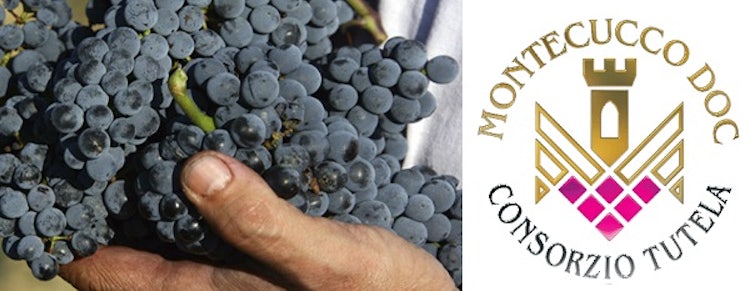
Extra Virgin Olive Oil: Olivastra
This particular variety of olive grows on the slopes of Monte Amiata up to 600 meters above sea level, particularly resistant to frigid winter temperatures. And. If left unattended, it will quickly go wild and sprout thorny branches!! These growing conditions produce an oil with a unique taste and aroma and a relatively high percentage of antioxidants and vitamin E.
Characterized by its ample, rich foliage, the Olivastra is distinguished by the small size and the peculiar colour of its fruit, which are purple-red during the growing phase and black at the maturation stage.

Vs.
IGP stands for Indicazione Geografica Protetta: Not as strict as DOP, the key is that, for a product to qualify, only part of the production needs to have taken place in the designated area.
The flavor tends towards sweet, without a bitter flavor; most distinctive is the spicy and persistent aftertaste which is not immediate, but grows over time. The area is currently certified IGP Tuscany and it has also been recognized as DOP for the extra virgin olive oil of Seggiano.
Don’t miss the Sagra della Bruschetta in Montegiovi, close to Seggiano, towards the end of September where you can savor the flavor of their oil in one of the best - and simplest - recipes ever.
Chestnuts from Monte Amiata IGP
The deliciousness of the "Castagna IGP del Monte Amiata" is not by chance, but rather the result of a series of rules and regulations that safeguard the “bontà” of this fruit!
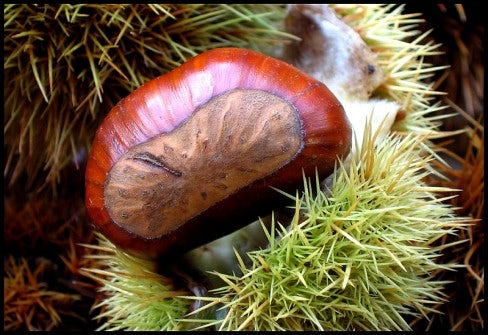
For example, these chestnuts are to be grown in areas between 350 and 1000 m.s.l.m. and the harvest must take place between mid September and mid November. It really comes as no surprise that the chestnut trees have earned IGP status and a permanent place in the hearts (and stomachs) of the people in the Maremma - these trees meant (almost) everything to the economic growth and survival of the community.
The first testimonies of the cultivation of chestnut trees on Mount Amiata dates back centuries before Christ. Since the 14th century, the "Statutes of the Amiata" laid down strict rules for the preservation and exploitation of the chestnut resources, both for the harvesting of fruits and for the production of timber.
There are 3 types of cultivated chestnuts, all rich in mineral salts & vitamins and considered a healthy addition to anyone’s menu, especially those who are quite active. It is for this reason that chestnuts are found in many forms in the “cucina povera” (the poor man’s cuisine) because it was abundant and nutritious - not that they knew it was filled with energy at the time, they just knew it took care of the hunger!
The three variations are called: marrone, cecio, and bastarda rossa, the last two perfect for being consumed freshly roasted. Read our article for more Italian recipes for chestnuts and its flour.
This delicious fruit is celebrate all fall long throughout Tuscany - even in the cities! You will find street vendors with roasting chestnuts on every corner, and signs in the supermarket claiming fresh ground chestnut flour for desserts and pastas as well as net bags filled with "marroni" for you to toast at home.
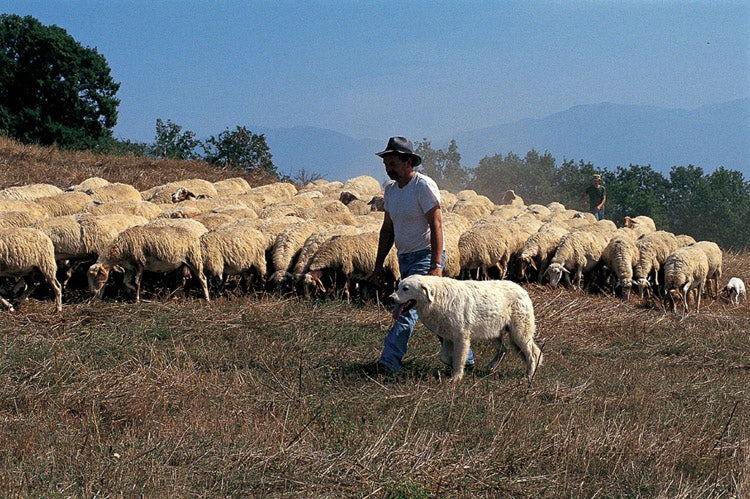
Pecorino Toscano DOP
Here we can’t help but talk about the "transumanza” (transhumance = practice of moving livestock - in this case sheep - from one grazing ground to another in a seasonal cycle, typically to lowlands in winter and highlands in summer).
It was a full time job and was of of the pillars of the economy: the act of moving large flocks of sheep from the highlands in Casentino to the lowlands in the Maremma. The journey passed through towns like that of Paganico considered the "gate of the Maremma", established specifically in the 13th century to facilitate trade and commercial exchanges. Or the Sasso d’Ombrone, whose medieval name was Sasso di Maremma, grew around the only feasible crossing of the river Ombrone thus making this almost a obligatory point of reference. Another town that grew due to the transumanza was, Dogane (the Italian word for tax) which required the milk and by products (like cheese) as payment for the grazing rights as they travelled the trails and paths.
Pecorino Toscano DOP (cheese), made from the milk of sheep, comes in the form of fresh, semi-aged and full aged and follows a strict discipline. In particular, the Pecorino cheese from Tuscany is known for sweet and delicate flavor evokes the scent of the pastures of Maremma. For more information on pecorino cheese in Tuscany read our article which talks about the different kinds of cheeses, production methods and how to bring some home. You can also include stops at Caseificio Manciano or Caseificio Maremma if you want to taste it fresh.
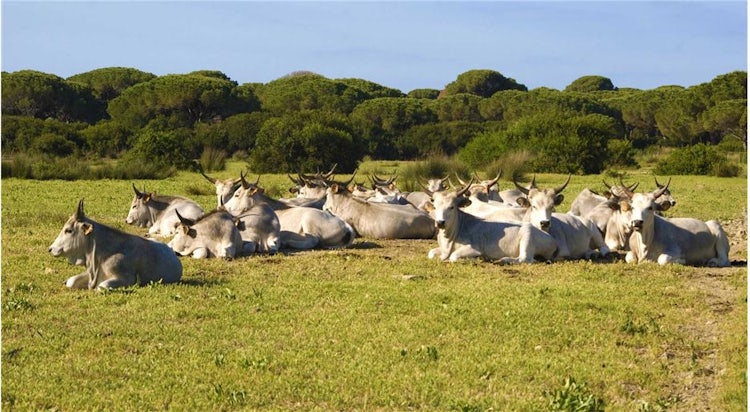
IGP Beef
Cattle have long been known as a steady and necessary working partner, and the landscape of the Maremma had then working under (sometimes) very adverse conditions. The documented presence of the Maremmano (cows) go as far back as the year 762! The name, a modification of the word marittima (meaning come from the sea), was first documented by Guittone d'Arezzo in 1294 - lending importance to this particular breed.
The Maremmano cattle, perhaps originally coming from Asia to Europe, is an excellent example of an animal capable of adapting to the rough conditions. Though over the last century man has attempted to create a "new and improved version"— substituting this breed with others — the Maremmana is reclaiming his right his position on the field — and on the menu.
A visit to the Tenuta di Paganico will give you an opportunity not only to see one of these “bestia” (in dialect, often referred to as the beast) but also buy fresh (organic) meat direct from the producer.
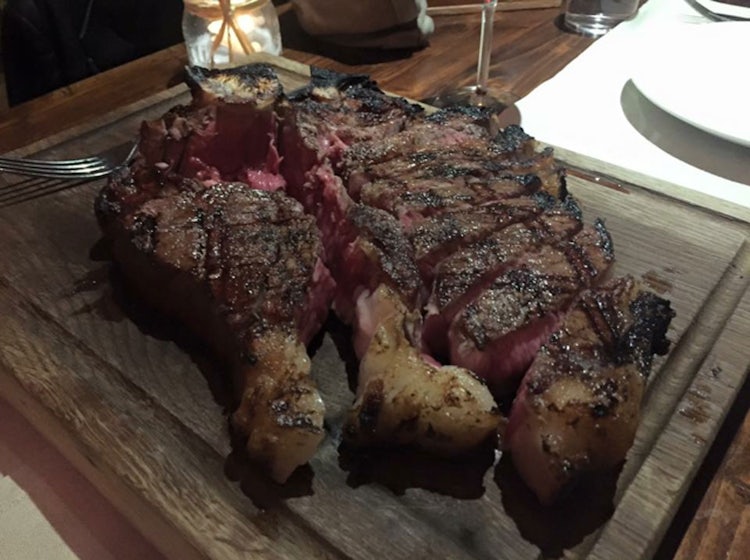
Special Recipes
There is no surprise here, every corner of Tuscany has their own special recipes— many of which are guarded with fierce jealousy, and secretly handed down from generation to generation. Here are two which have a special places in the hearts of the Maremma population:
Biscotto Salato di Roccalbegna
Though it was only recently resurrected in 1982, the origins of this pretzel-shaped savory biscuit can be found in the Middle Ages. It was actually found throughout the area area, not just at the town of Roccalbegna. The ingredients of the biscotto where treasured — especially olive oil — and this meant that the biscuit (or cookie) was prepared only for holidays and special occasions.

The recipe uses locally available ingredients (flour, extra-virgin olive oil, aniseeds, white wine, salt). They have a tendency to stay fresh and fragrant for a long time, and could be found on the table for breakfast, and after lunch and dinner.
According to various oral testimonies, it was customary to mark them with keys and other utensils before baking, so that the different batches could be told apart when they were brought to the village’s two wood-burning ovens.
There are still two bakeries in town that make these delicious treats following the original method or if you are in the area in August - stop in at the Sagra Del Biscotto Salato di Roccalbegna where you can enjoy the biscotti as well as many other specialities of the area.
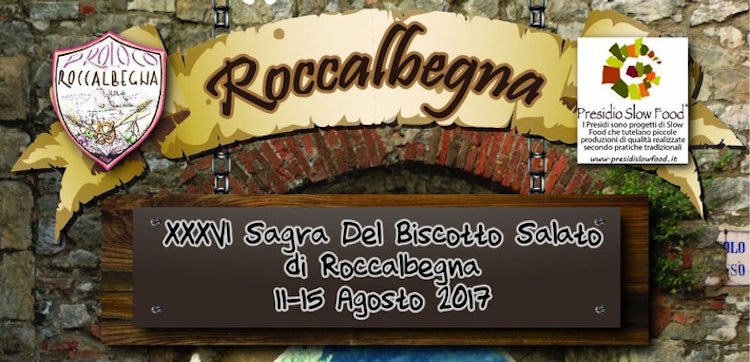
Zuppa arcidossina
Here we have a bit of a dilemma - what came first the “zuppa arcidossina” or the “acquacotta”?
Not that it makes much of a difference when you are sitting at the table, savoring the simple yet intricate mix of flavors. Many consider this soup the ancestor to the famous Maremmana acquacotta (translated literally as cooked water... a dish commonly found on the transhumance travels, when there wasn’t that much to put in the pot except water.)
Traditionally served in a very liquid form poured over slices of toasted bread, it was a staple for those on who had little in the way of ingredients, using things they could easily find: mainly spinach or leafy greens, herbs, hard bread and cheese.

Ricciolina “Badegna”
Waste was not acceptable in a community that was constantly knocking on the door of hunger and poverty. And tradition tells us that this delicious dessert, with its origins near the Abbey of San Salvatore, stems from the old adage, “waste not want not.”
The pastry base, traditionally prepared by kneading flour, butter, egg yolks, yeast and sugar, encases a filling of almonds and chocolate. The innovation is found in the topping, the story is that “Nonna Beppa” (along with her cooking companions (Dina, Ada and Luigina) opted to cover the cake with a meringue with the leftover egg whites and to add a decorative swirl of chocolate. So instead of using more dough for the covering, she consumed all of the ingredients - not wasting a drop of the precious food. The result was a true success, and Nonna Beppa went down in history.

